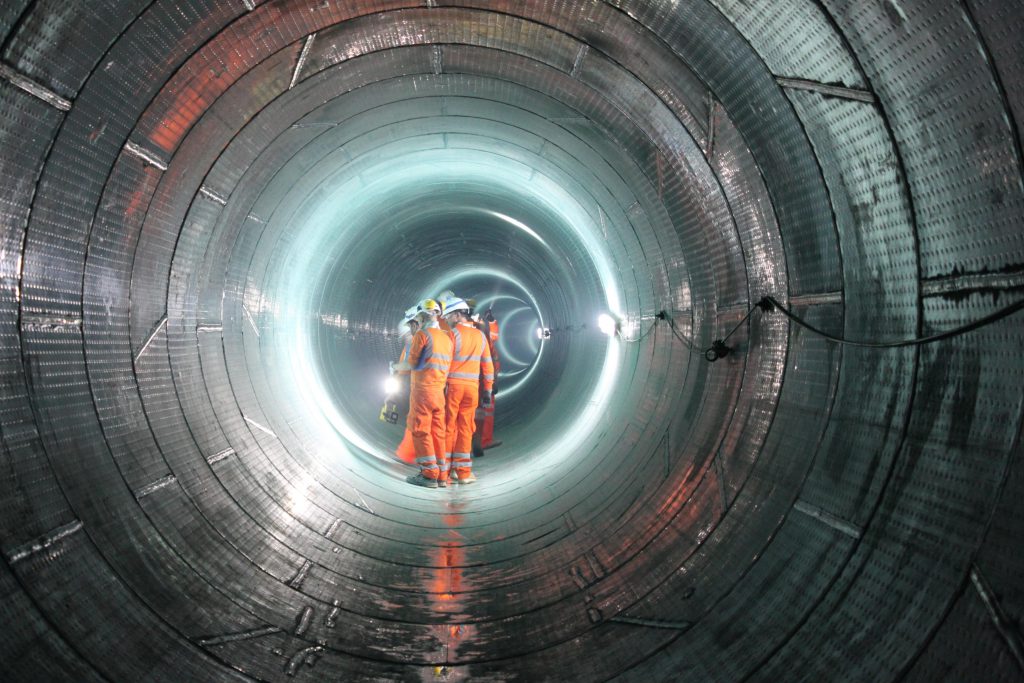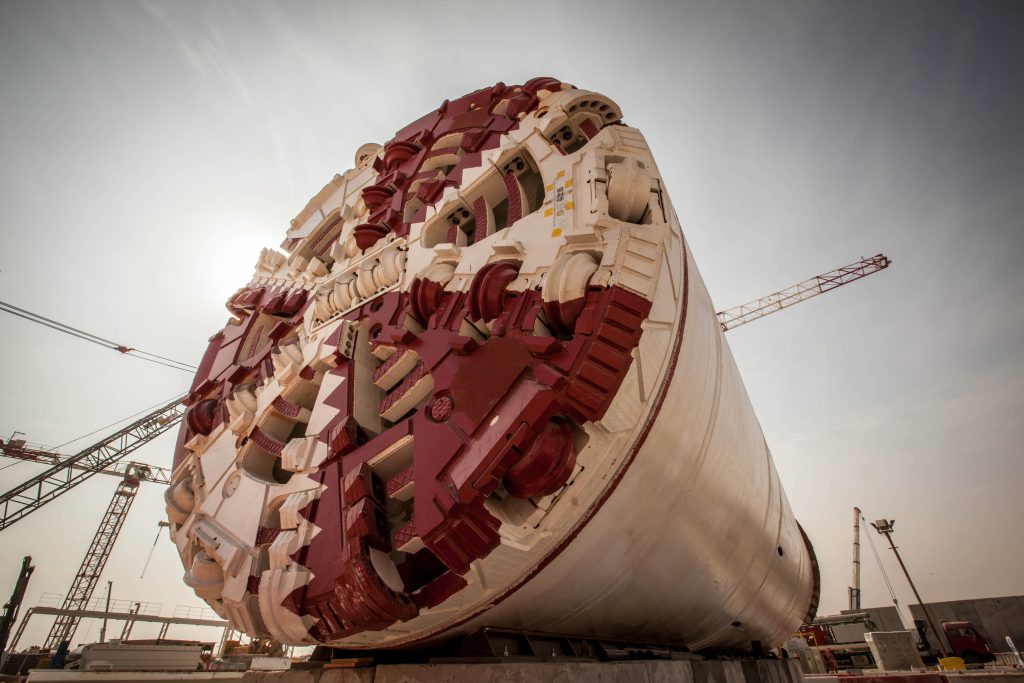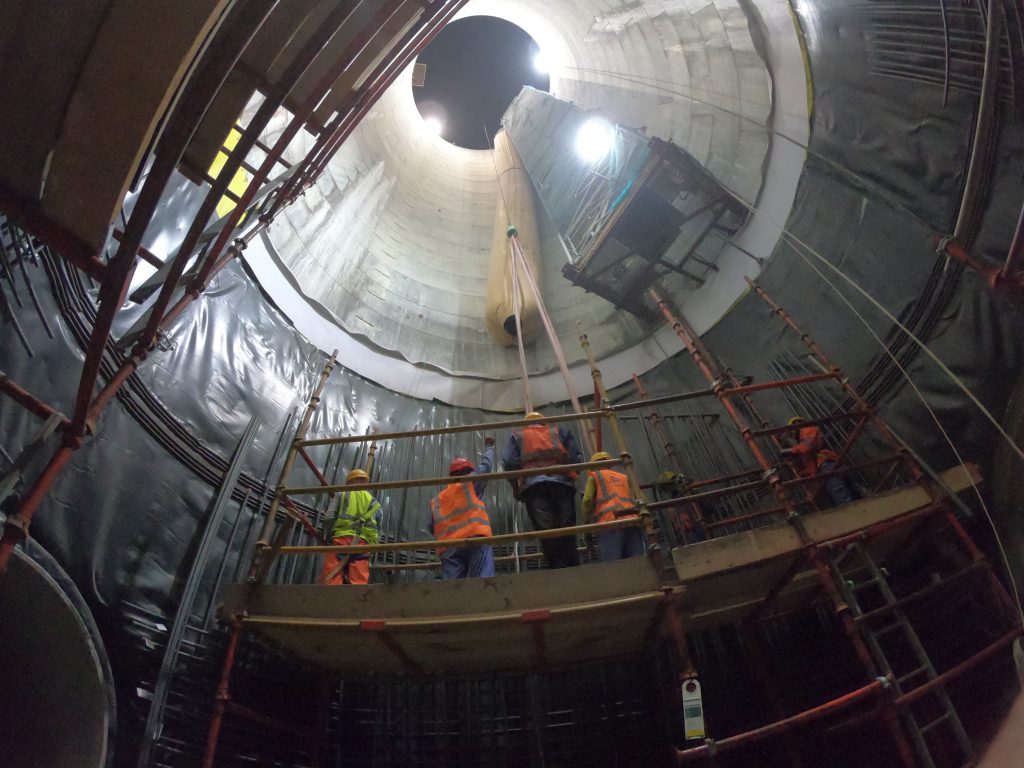Main trunk sewer in Doha sewerage project wins CEEQUAL award
Overview
The main trunk sewer (MTS) in the new Doha sewerage project was assessed by CEEQUAL (now known as BREEAM Infrastructure) and awarded a rating of Good. It also won an Outstanding Achievement award in the Water Environment and Resources category. This infrastructure project provides sanitation to the southern area of Doha, Qatar, which is heavily populated and growing fast.
About
Ashghal is the the Public Works Authority in Qatar. It was established in 2004 and is responsible for the planning, design, procurement, construction, delivery, and asset management of all of Qatar’s infrastructure projects and public buildings.
Background
The main trunk sewer (MTS) is a major element of the Doha South sewage infrastructure project. The MTS is a gravity-based sewerage system that conveys sewage to the Doha South Sewage Treatment Plant (STW). It is designed conservatively to assure that it is self-cleansing during low flows without accumulation of solids, which could otherwise become a maintenance issue. MTS is also sized to meet projected flows for its 100-year design life. MTS has no pumps, valves or any other mechanical or electrical components within the sewer or associated structures. MTS was constructed using tunnel boring machines which required a limited number of shafts, ultimately limiting adverse impacts to the environment.

Challenges
The purpose of the new sewer is to accommodate the projected population growth for an additional million people. The project is strategic in nature and was developed to change the entire approach to foul sewer drainage in the Doha South catchment from a pumped sewer network to a gravity sewer network. The aim is to address, amongst other things, serious environmental and health issues resulting from undersized and aged sewerage infrastructure.
By addressing and resolving serious environmental and health issues resulting from undersized and aged sewerage infrastructure, the Doha South sewage infrastructure project both supports and contributes to achieving the Qatari National Vision (QNV) 2030. The QNV 2030 aims to transform Qatar into an advanced country capable of sustaining its own development and providing a high standard of living for its people.
Appointing a CEEQUAL assessor
The main challenge in this case was that the CEEQUAL assessor was engaged after the concept design was complete. Therefore, there were aspects in the design and the evidence documentation that the Assessor could not influence. This was overcome by being very selective with the credits targeted.
Leaving the landscape untouched
Another limitation in terms of ecology and biodiversity was that the project wasn’t permitted by the municipality to improve the landscape as part of the reinstatement plan. That meant everything had to be restored to its exact pre-construction condition. The project team organised a meeting with leading figures of the Public Parks Department to discuss opportunities for improvement to the landscape in future projects and the potential benefits associated.
Setting water and energy targets
The final major challenge was setting targets for energy and water. This is a major part of the CEEQUAL assessment and required for some points. This was challenging because the CEEQUAL assessor was engaged at a late stage and there were no comparable projects in the region with available metrics to be reference. The projects carbon data now serves as a benchmark for future projects.
Solutions
CEEQUAL influenced the practice of reducing carbon emissions during construction. The Carbon footprint management plan which included various resource efficiency strategies integrated requirements from the CEEQUAL assessment (specifically in section 8 and 9). Had it not been for CEEQUAL material, water, fuel, and waste tracking would not so integral to the reporting process. Without CEEQUAL, there would also be less urgency to optimise resources and reduce waste.

The water environment
The design of MTS takes measures to protect groundwater from any potential contamination. The MTS tunnel is designed with three layers of redundancy to prevent leakage including grouting on the outside of the pipe, the pipe itself and an HDPE membrane inside the pipe. The environmental impact assessment concluded that based on these design features the risk of potential leakage was of ‘no significance’.
In terms of construction, the protection of the groundwater is embedded into the contract. The contract states that ‘active dewatering is not permitted’. This condition had a tremendous impact on the project because it obliged the contractor to use efficient construction methodologies such as diaphragm walls, vertical shaft-sinking machines and grouting in the shaft construction. This significantly decreased the amount of dewatering required for the project ultimately minimising groundwater depletion.
Project management
The programme management consultant, formerly CH2M HILL (now Jacobs) developed the concept and preliminary design of the project based on its extensive international experience and best practices. It carefully specified the materials in the structures to be durable for the maintenance-free 100-year design life in the aggressive sewer environment and Doha’s hyper-saline ground conditions. The programme management consultant also managed the development of the environmental impact assessment and conducted all forms of stakeholder management.
Upon contract award, both the contractor (Bouygues) and the designer (AECOM) had their own sustainability procedures implemented into their code of practice. This documented commitment supported the implementation of sustainability throughout the cycle of the project. Furthermore, both the designer and contractor are ISO14001 certified meaning they have their own effective environmental management system which lent itself to managing the detailed design and construction of MTS. At the project management level, environmental risk and opportunities were identified, recorded, and prioritised according to their significance throughout the course of the project.
Finally, the whole project team understood the innovative nature of this project to the region in terms of ‘sustainability management on mega-projects’. In so doing, the team actively participated in sharing best practices and lessons learned with fellow members of the civil engineering sector. This was carried out through various media such as newspaper articles, presentations in conferences, and published research papers.
Land use and landscape
Due to the nature of the project being a tunnel, the surrounding land uses had a tremendous influence on the route and construction methodology of MTS. A study was conducted by the programme management consultant whereby ten different route options were presented. The report looked at the environmental and social implications of each of the ten routes.
Factors assessed included the characterisation of the areas, environmental setting, sensitive receptors, historic land uses, social sustainability aspects, land use efficiency, as well as effects on neighbours. These factors were compiled on a scoring sheet, the scores for each option were assessed by multiple reviewers and the best performing route was selected. Subsequently, a geotechnical investigation was carried out for the selected route. The site-specific subsurface geo-investigation and report ensured the client about the suitability performance of the chosen route. The land use and site selection for the route were rigorously assessed and the best-case scenario route in terms of environmental and social performance was selected.
Energy use
During the construction process the contractor maximised opportunities to use energy efficiently. A carbon footprint management plan was produced to reduce overall energy consumption such as the selection and maintenance of efficient generators on site. Other strategies that were implemented were, the use of lithium ion batteries for the boring machines, solar panels to operate all cameras on site and LED lighting in the tunnel. Fuel was tracked and reported on a monthly basis in order to benchmark the project and study trends.
Water use
Through its design, the MTS eliminates the use of water during operation. It replaces the existing sewage pumping stations with a gravity-based sewage system. The MTS adequately conveys low flows without accumulation of solids and is simultaneously self-cleaning and has no pumps, or valves within the sewer or associated structures.
During the construction process, specific and measurable requirements were implemented to minimide the projects impact on water resources. Within the site offices, flow and flush fixtures were all low-flow and plastic bottles were completely banned.
Water was efficiently used for construction activities. As per the dewatering management plan and the water quality control plan, dewatered water was treated and reused in order to minimise the use of potable water. A primary and secondary lagoon were set up on site to facilitate the groundwater treatment, reuse, and disposal process. Treated dewatering effluent was mainly reused for dust suppression, concrete curing, soil compaction, cleaning, as well as tunnel boring and grouting.
Furthermore, in order to maximise the efficient use of water the contractor collected and reused rainwater onsite. Rainwater was also collected by gravity into two underground tanks which were equipped with oil separators. The collected water was then pumped into a tanker and moved to the primary lagoon whereby it went through the same treatment process as groundwater. After this process, the rainwater was reused on site.
Material use
To achieve the required maintenance free design life of 100 years, the tunnel support system originally comprised a precast concrete segmental lining with a separate corrosion protection lining comprising of a 250-mm thick sacrificial cast-in-place concrete layer integral with a HDPE membrane. The project adopted however an innovative lining system for big tunnel sewers by combining the segmental lining and corrosion protection lining. This achieved a significant concrete lining thickness reduction of 200 mm, along with an associated reduction in the excavation diameter of 445 mm, which led to a 20% decrease in spoil to handle.
The tunnel segments and access shaft risers were all prefabricated and locally manufactured near the project site. Prefabrication provided precision in terms of material procurement and waste reduction.
Lastly material forecasts were carried out and reported on a monthly basis. The end of the project report shows that the planned quantities and actual quantities for major materials were consistently aligned throughout the duration of the project. The CEMP included logistic plans to support the material management approach such as transportation, laydown areas, and waste management.
Transport
The project is completely below ground and will have no impact on traffic in the operational phase. Nonetheless, measures were put in place during the construction phase to both minimise the traffic impacts on the local community and discourage car usage whilst commuting to work for staff.
The contractor assigned specific routes and times of day for the transport of materials. Entrances to the project sites and diversion plans were arranged in a manner that they do not disturb the local community; this is captured in the traffic management plan. From the onset of the project, site office staff were surveyed about their office commuting patterns and encouraged to carpool in groups based on the findings. Potential carpooling opportunities were identified and encouraged where possible. Lastly, during the winter months, the contractor launched a ‘bike to work’ initiative whereby staff were incentivised with helmets and bike lights if they cycled to work. Staff were also permitted access an on-site shower if they cycled to work. The ‘bike to work’ initiative was promoted through posters and emails.
Benefits
The use of CEEQUAL increased the focus of the project team to be resourceful and efficient in the delivery of the project. In terms of the design, the project team reduced material purchased by optimising the concrete lining of the shafts in relations to the geotechnical conditions.

